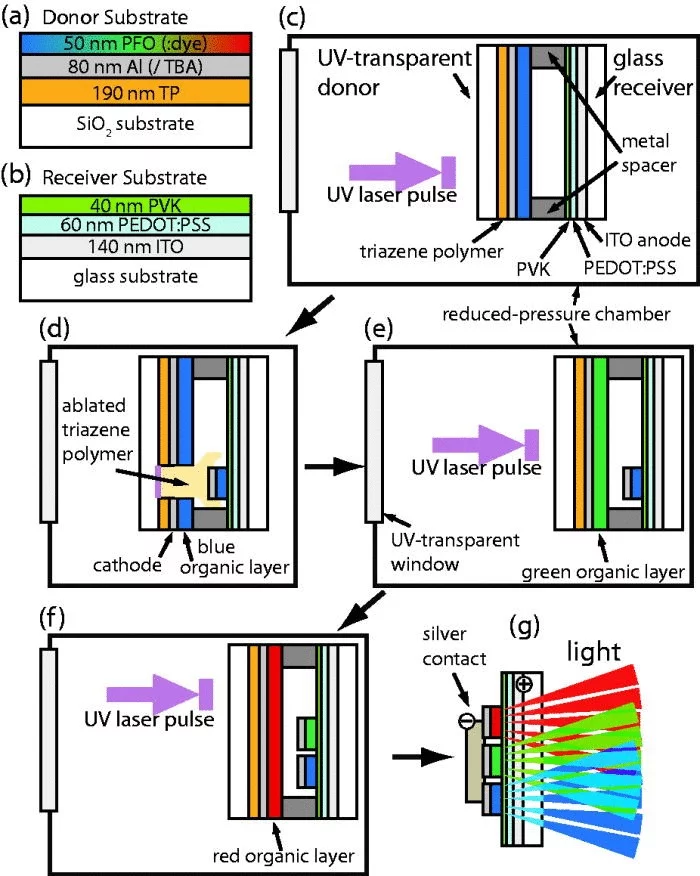Abstract:
An optimized laser-induced forward transfer (LIFT) technique has been used to fabricate tri-color organic light-emitting diode (OLED) pixels. At reduced pressures, and with a defined donor-receiver gap, patterned depositions of polyfluorene-based OLED pixels have been achieved. OLED pixel functionality has been demonstrated and compared with devices made using conventional deposition techniques. In addition, improved functionality has been obtained by coating the cathode with an electron-injecting layer, a process not possible using conventional OLED fabrication techniques. The OLED pixels fabricated by LIFT reach efficiencies on the range of conventionally fabricated devices and even surpass them in the case of blue pixels.
Facility: ENE, EMPA, LMX, Thin Films and Interfaces
Reference: J. Shaw-Stewart, T. Lippert, M. Nagel, F. Nüesch, A. Wokaun; Appl. Phys. Lett. 100, 203303 (2012)
Read full article: here

